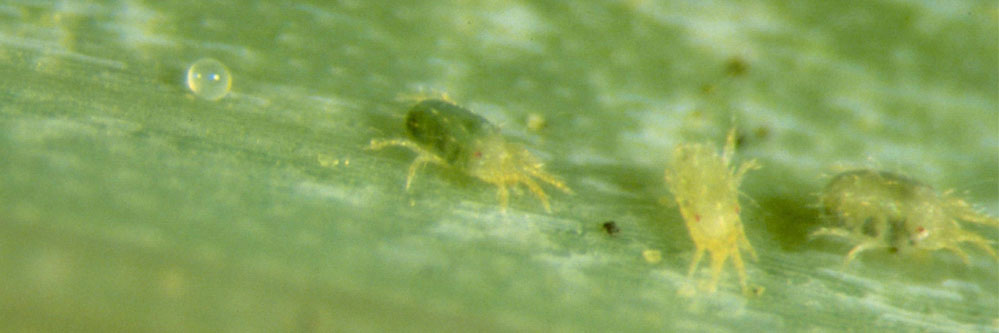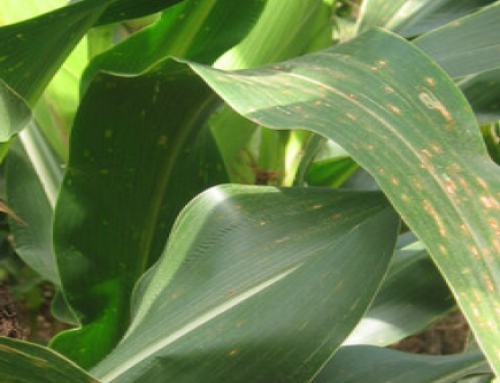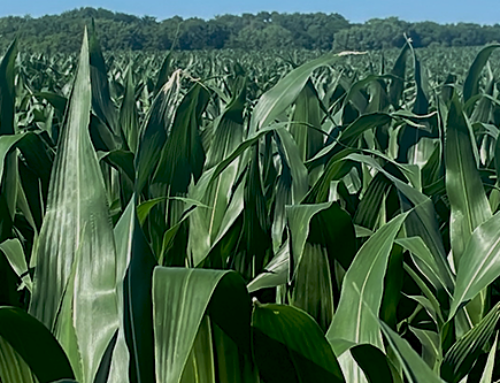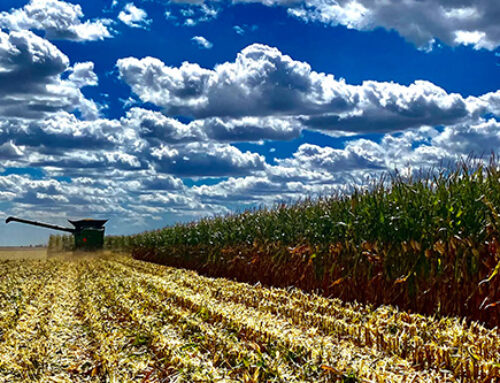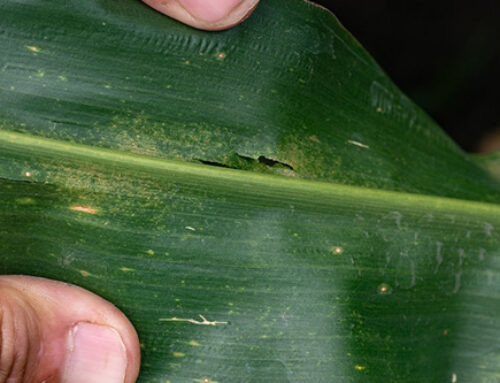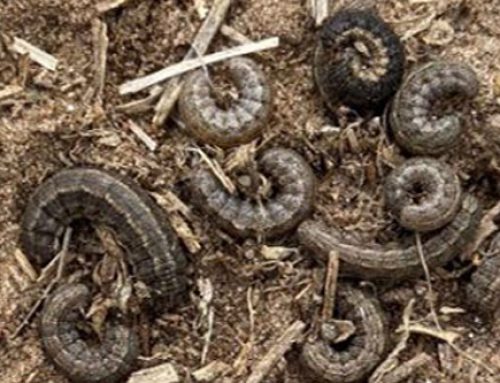Spider mites, both the Banks Grass Mite and the Two-Spotted Spider Mite, thrive in hot and dry climates. With this being said, corn producers in southwest Kansas can almost count on finding mites in the field year after year. However, after a summer where this region of the country has experienced extremely high amounts of rainfall and cooler temperatures than average, producers and agronomist have the opportunity of preventing an outbreak of spider mites in fields rather than fighting them.
Detecting colonies of spider mites and taking early action is vitally important for preventing severe outbreaks. Once spider mites reach a field, they stay there permanently. Waiting to spray a miticide on a field that is already infested with spider mites will result in the loss of maximum profit potential. Mites can reproduce up to ten generations per growing season. Scouting for mites early and taking action as quickly as possible after they are found can turn out to be very beneficial for a producer from an economic stand point. If spider mites are not controlled before the pre harvest interval allowed by the miticide, the production of the field will be less, as the mites have already caused severe damage to the crop for it to produce any economic profit. This can be exceptionally bad with the recent drop in grain prices.
This summer it seems like it has taken quite some time for spider mites to make an appearance due to the cool temperatures and moisture. However, once it became dry and hot, they moved in quickly. Early detection of spider mites has allowed agronomists to make effective and preventative recommendations.
It can become a costly event to allow spider mites to reproduce and damage more of the plant in the field. Early identification of mites and preventative actions taken can stop the rapid generational growth of the species and allow crops to continue working towards maximum potential.
Written by: Zac Kunneman; 2016 Intern in Montezuma, KS Division; Oklahoma State University
Featured Image by: Frank Peairs, Colorado State University, Insectimages.org, Banks Grass Mites
